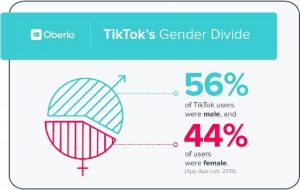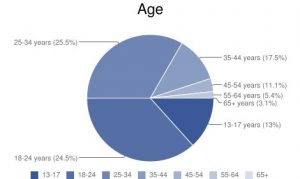
4 Dec
Brand Partnerships | An innovative way to reach new audiences
Written by Jared Rood, Brand Partnerships Manager at Ingenuity.
The landscape
Speaking with brand and marketing managers over the past few years, one of the most common challenges that comes up is how to effectively reach new audiences, sometimes to the point of re-aligning their market position entirely.
Brands will often try to do this via traditional methods, such as advertising campaigns. However these generally commit a significant chunk of marketing budgets with no guarantee of success. In fact, it’s been estimated that most Western consumers are exposed to between 4,000 – 10,000 ads each day, so it isn’t surprising that people are increasingly blind to them, consciously and subconsciously blocking them.
Creating campaign messaging that is relevant to a new audience can also be a tricky prospect to navigate, particularly whilst trying to retain consistency with the overall brand identity and not alienating existing consumers.
Brand partnerships, on the other hand, offer a more effective way to reach new audiences for a fraction of the budget. With two like-minded brands pulling in the same direction using a combination of pooled assets, the campaigns are often bigger and better than what could be possible if they were to go at it alone. The borrowing of a partner brand’s credibility among a particular audience is hugely effective – as long as there is a fit between the brands.
Success in brand partnerships
As with all aspects of marketing, success in a brand partnership comes from the campaign making sense to the consumer, with better brand personality fits and stories leading to more effective campaigns.
This is crucial more so now than ever, with a Credos study showing that consumer trust in advertising is at its lowest ebb, halving since 1992 from 50% to 25%.
Types of audience defined
One of the first steps in any strategy is defining the target audience (be it an existing audience or a new one). Clearly defining demographic parameters such as age, gender, location, interests, media consumption, careers, etc. allows for the necessary level of focus to be applied to a future campaign.


This then influences which brands would make ideal partners, as well as the direction that the partnership amplification takes. Naturally, different combinations of media channels will reach and resonate with different audiences in different ways.
Who’s doing it well?
Well thought out partnership concepts and strategies have sparked some of the most successful and creative business relationships in recent years. GoPro’s partnership with Red Bull is one such example that struck gold. GoPro became the exclusive provider of point-of-view imaging technology for footage capture from Red Bull’s events, with the two like-minded brands spanning consumer tech and FMCG cross-promoting content and each other’s brands. Crucially, this partnership made natural sense for consumers due to the relationship being built around the brands’ aligned positioning around adventure. Accessibility has contributed further to the success, with consumers being able to interact with each brand daily, whilst also seeing the aspirational content being produced.
However, not all brand partnerships are as obvious. One example that immediately springs to mind is the much-spoken-about Star Wars x Covergirl partnership from 2015. To celebrate the launch of The Force Awakens, Covergirl launched a 19-piece makeup collection and several themed ‘looks’ alongside an advertising campaign. This of course generated huge coverage for Lucasfilm along with a marketing campaign aimed mainly at women, not necessarily a major target in Star Wars’ traditional marketing. On the other side, Covergirl got to highlight their products in a hugely innovative way, creating ‘light side’ and ‘dark side’ looks by asking consumers ‘Which side are you on?’, whilst gaining use of the assets of one of the most iconic film franchises of all time.
Commitment and creativity
Key to the success of a brand partnership is the level of commitment from the brands involved. Lacoste demonstrated this in their ongoing ‘Save our species’ partnership with IUCN. By doing something as simple as replacing their iconic crocodile logo with other endangered species, and creating the number of polos to correspond with the actual number of each animal remaining in the wild, they created one of the best-covered and most effective brand partnerships of recent times.
Using such examples as influences, we are always seeking the most innovative and exciting ways to form partnership strategies and relationships for our clients.
Ingenuity and partnerships
Having extensive experience in helping brands to develop an effective partnership offering, the Ingenuity team are best placed to provide consultancy services to help you build your offering and then create a robust sales and marketing plan that will generate you the leads with target partners.
Our cross-category experience lies in building partnerships strategy and business development for brands such as Merlin Entertainments, Nickelodeon, Cannes Lions Festivals, Tough Mudder, Lastminute, The Times, Virgin Red, Beano and Hearst.
To see more, please check out our Brand Partnerships offering, and if you’re interested in engaging new audiences or developing a new way to market your brand via strategic partnerships, drop me a line at jared.rood@ingenuitylondon.com.
Enjoy the post?
Learn more about Brand Partnerships on the Ingenuity blog.
